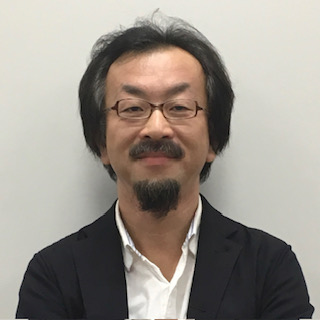
Member Profile: Yukio Andoh
1. What is your current profession and how long have you been in the field?
I am a computer graphics and interactive technology professional working as a CG/VFX programmer and engineer, UX designer, and consultant specializing in VR/AR/MR experiences.
My work spans a wide range of areas, including VR application development, stereoscopic 3D visualization, large-scale immersive dome theater installations, and interactive content creation. I have accumulated more than 30 years of hands-on industry experience, and in recent years I have been deeply involved in generative AI research and creative workflows.
2. What was your first job in the field?
I began my career as a CG programmer. During the early era of high-end computer graphics, I worked with Silicon Graphics workstations—machines that often cost from tens of thousands to millions of dollars—and specialized in OpenGL programming and RenderMan rendering technologies. I also contributed to the community through technical writing, tutorials, and publications that supported many early CG learners.SIGGRAPH papers and exhibitions throughout the late 1990s and early 2000s—the dawn of modern CG/VFX—became the foundation for my technical and creative direction.
3. Where did you receive your formal education?
I studied physical chemistry and computer science at the Kitami Institute of Technology in northern Japan. During my studies, I learned programming, computer architecture, and 3D graphics theory, and I have continued to pursue cutting-edge knowledge through SIGGRAPH and other international academic communities.
4. How did you first get involved with ACM SIGGRAPH?
My involvement with SIGGRAPH began early in my career when I first attended the conference—an experience that strongly shaped my professional path. Since then, I have actively participated in SIGGRAPH and the SIGGRAPH Tokyo Chapter, contributing to community activities, education initiatives, and local events. I have served on committees and supported presentations, reporting projects, and workshops for SIGGRAPH Asia events hosted in Tokyo.
5. What is your most memorable SIGGRAPH experience?
One of my proudest moments was when a project I worked on was screened at the Electronic Theater, which remains an unforgettable milestone for me. Every SIGGRAPH brings new inspiration that continually fuels my passion.
6. Tell us about a project you would like to share with the SIGGRAPH community.
I am currently writing an ongoing online editorial series titled “Door to CG/VFX”, which explores the future of CG/VFX in the age of generative AI. The series examines rapidly evolving production pipelines, ethics, creativity, and user experience in AI-generated video and animation.
Read the series here:
7. If you could have dinner with anyone, living or deceased, who would it be?
Leonardo da Vinci.
I would love to talk with him about where his extraordinary imagination originated and how he might innovate if he had access to today’s technologies.
8. What is something most people don’t know about you?
I play the piano, and before entering the CG world, I once considered becoming a sound or recording engineer. I also have experience with electronic instruments such as MIDI and have performed as both a DJ and VJ.
9. Who is the person from whom you have learned the most in your life,
and what did they teach you?
Professor Tomoyuki Nishita, a recipient of the Coons Award, greatly influenced my professional philosophy.From him, I learned the importance of steadily building knowledge, research, and work step by step toward meaningful achievements.
10. Was there a specific person who influenced your decision to become
involved with ACM SIGGRAPH?
Masa Inakage, whose passionate contributions and leadership inspired me to follow a similar path of active community involvement.
11. What moment in your career are you most proud of?
“The greatest joy for me is seeing someone smile, be inspired, or feel excited because of something I created or contributed to. Those moments make every challenge worthwhile.”